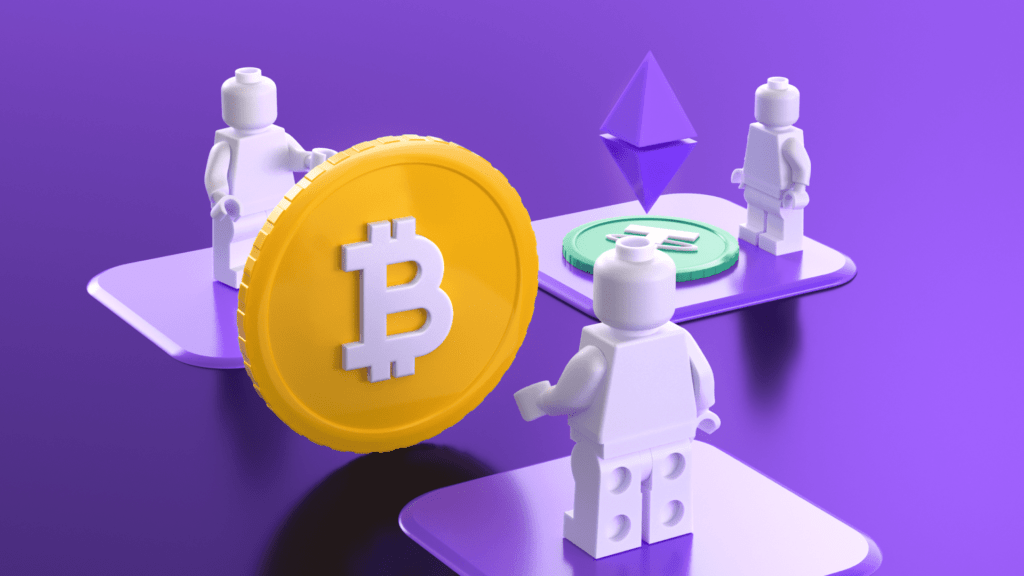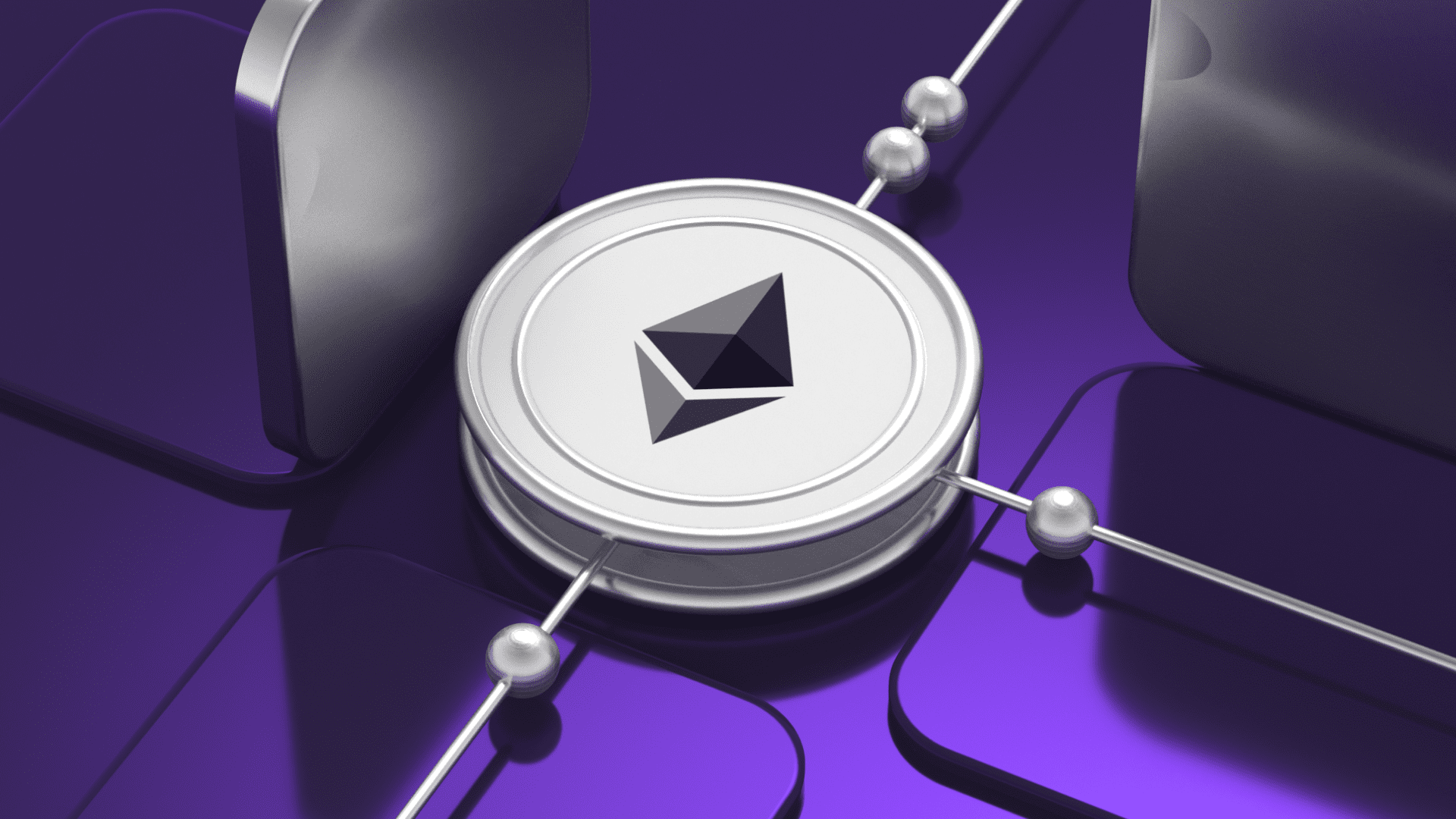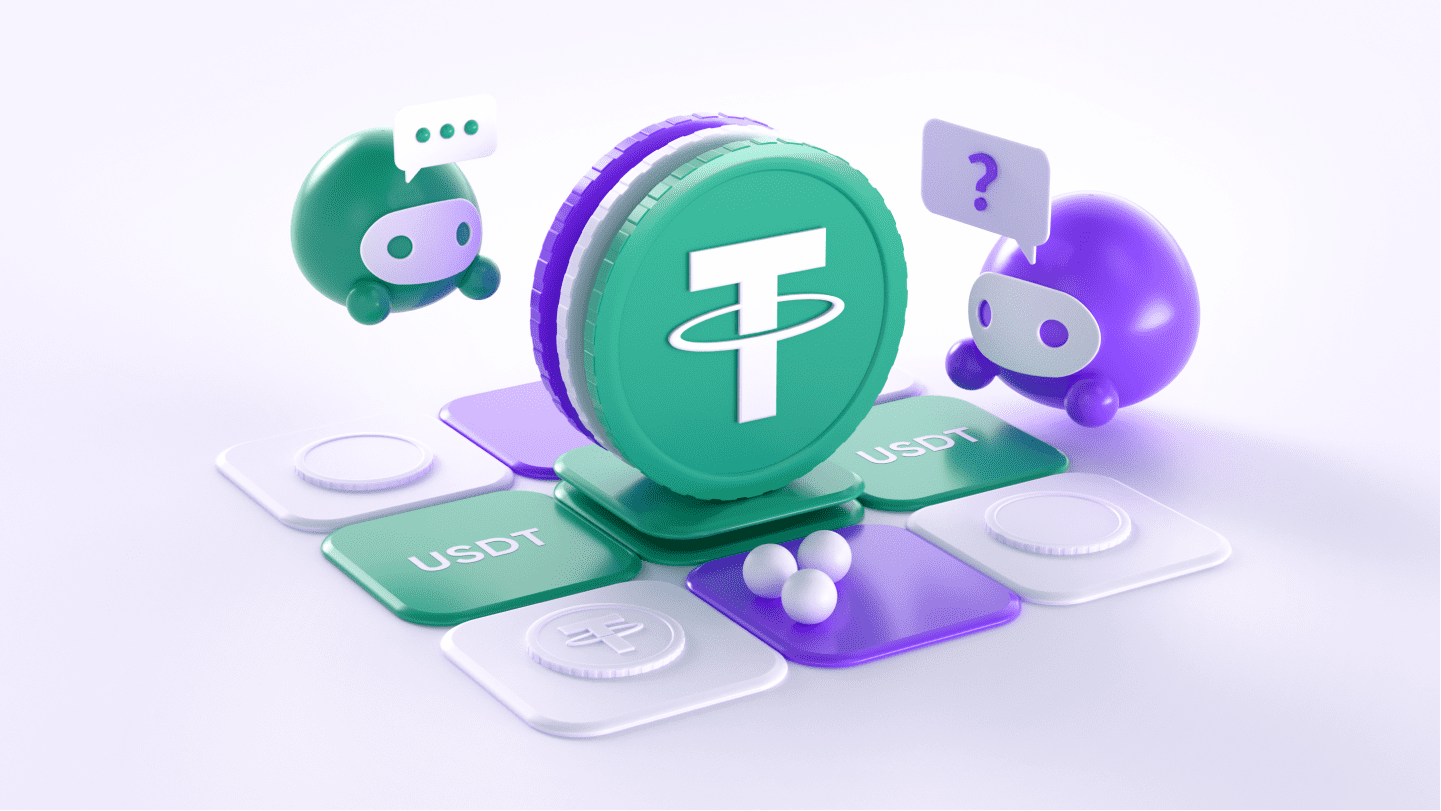
Are you tired of reading about Bitcoin, and USDT, and not understanding what it’s all about? Wondering why it’s necessary and where to start? You’ve come to the right place! Cryptocurrency emerged as an alternative to the traditional financial system, and its popularity is growing. Imagine being able to send money anywhere in the world instantly and cheaply. Or storing your savings in a secure digital wallet without worrying about inflation, economic crises, or banking issues. This and much more is what the world of cryptocurrencies opens up.
Today, you’ll get a comprehensive, step-by-step guide to cryptocurrency, written specifically for beginners. We’ll discuss the different types of cryptocurrencies, how they all work, and what you’ll need to get started.
Types of Cryptocurrencies
Let’s start with the basics. Cryptocurrency owes its existence to a technology called “blockchain.” Imagine a chain of interconnected blocks, each containing a record of all digital coin transfers. If you try to tamper with the data in one block, the entire chain is compromised. Each new block is “tied” to all previous ones, making it impossible to alter a single block without disrupting the integrity of the entire system.
What’s more, the blockchain is simultaneously stored on millions of computers. This makes it virtually impossible to forge or hack the entire chain. As a result, blockchain is an ultra-reliable and secure technology. It powers cryptocurrencies that differ in purpose, technical features, mining methods, etc.
Stablecoins
This is the first and most important type of cryptocurrency that newcomers should know. They got their name due to their stability, which is pegged to real-world assets. Picture a casual dollar but in digital form on the blockchain. The exchange rate of stablecoins is firmly tied to currencies like the dollar, euro, or even gold. For example, 1 USDT equals 1 USD.
Why is this necessary? First, stablecoins allow you to safely store savings in crypto without fearing the market’s wild volatility. Second, you have complete control over your digital money, independent of banks and governments. And third, the yield from staking stablecoins is significantly higher than bank deposits in the same currencies. Plus, transfers between wallets are instant and practically free.
The most popular stablecoins are USDT, USDC, and DAI. These are ideal starting points for venturing into the cryptocurrency world. You’ll be able to safely explore crypto markets, try your hand at trading, transfer funds, and much more.
Coins and Tokens
Think of blockchain as a bustling city, with coins as its native inhabitants. These “coins” – like Bitcoin, Ethereum, and Solana – have their blockchain, complete with unique ecosystems, rules, transaction fees, and minting processes. They’re the OG residents if you will.
On the flip side, we have “tokens” – the crypto world’s version of out-of-towners. These digital assets don’t have their blockchain, instead piggybacking on existing networks. UNI and BCH are prime examples of these blockchain tourists.
But here’s where it gets interesting: coins can become tokens and vice versa. It’s like Ethereum taking a vacation in Solana-land, or Solana setting up shop in Ethereum City. This crypto cross-pollination creates a web of interconnected digital realms, with each coin ultimately calling one blockchain home.
The Anonymity Cryptos
Contrary to popular belief, most cryptocurrencies aren’t as private as you think. Take Bitcoin, for instance – its blockchain is an open book. Anyone can play detective and peek at wallet balances or transaction histories. That said, linking a wallet to a specific person? That’s where things get tricky. For the privacy purists out there, fear not. Some coins come with an extra layer of encryption for those who want to keep their financial moves under wraps. The heavy hitters in this space include Monero (XMR), Zcash (ZEC), and Dash (DASH).
These privacy coins are all about keeping your transactions on the down low. They’re so good at covering their tracks that even if someone managed to crack into the blockchain, they’d be left scratching their head, unable to follow the money trail.
But as with all things in life, there’s a catch. These anonymous cryptocurrencies often find themselves in hot water with regulators, making them increasingly tricky to trade. But don’t worry – if you’re in the market for these elusive coins, Monetory‘s got your back, offering top-notch rates for these privacy-focused digital assets.
Meme Cryptocurrencies
In the crypto world, there’s a whole category of coins created purely for memes and jokes. They’re called “meme coins.” Many of them started as a gag but later gained real value and a devoted following. Take Dogecoin, for instance. It began with an image of an unremarkable dog and later got a boost from Elon Musk’s tweets. Or consider the “jeo boden” token in the Solana ecosystem, which portrays Joe Biden in a “poorly drawn” style.
Meme coins play by their own rules. Their value can skyrocket by hundreds of percent due to a random meme or a celebrity’s offhand comment. But they can crash just as quickly. It’s best not to treat meme coins as serious investments. They’re more of an opportunity to dive into the crypto scene, partake in trendy jokes, and ride the hype wave.
Exchange and Platform Tokens
At some point, leading crypto exchanges thought, “Why don’t we launch our own coins?” That’s how BNB (Binance Coin), GT (GateToken), HT (HuobiToken), and many others came to be. These coins benefit both the exchanges and their users. For exchanges, they attract additional liquidity and enable the launch of new products, offering special perks to token holders. A portion of the fees goes towards buying back and burning coins, increasing their value. Holders, in turn, enjoy reduced trading fees, access to exclusive trading tools, and various promotions run by the platform.
If you’re an active trader on a platform, it makes sense to get your hands on its token. For example, holding BNB on Binance will save you money on transactions. You can then reinvest those savings back into BNB, creating a profit loop.
GameFi Tokens
What if in-game currency had real-world value that you could cash out? Sounds interesting, doesn’t it? That’s exactly what gaming cryptocurrencies and the Play-to-Earn model offer. In projects like Axie Infinity, Decentraland, The Sandbox, and similar ones, players earn rewards in the form of in-game tokens for their activities – completing quests and battling enemies.
These coins are traded on exchanges and can be converted into regular money. Moreover, some gamers are already making a living exclusively by playing in blockchain universes! If you’re passionate about this, crypto games are worth exploring. Who knows, you might become a millionaire just by spending time on your favorite game. By the way, the latest example is Notcoin. People just clicked on the screen to earn coins, and after listing they were sold. Now another clicker game is at its peak: Humster Kombat.
Where Does Cryptocurrency Come From?
We have a pretty good grasp on how regular money works. But what about the issuance of cryptocurrencies? Unlike fiat, new crypto coins are minted according to algorithms baked into the blockchain’s code. These rules are set in stone (remember what we said about blockchain?). Cryptocurrencies operate on transparent issuance mechanisms, tightly constrained by mathematical models. No one can simply print as many coins as they fancy.
There are two main ways to mint new cryptocurrencies:
Mining – powerful hardware (GPUs or ASICs) processes transactions and creates new blocks in the chain. Miners are rewarded with freshly minted coins for their efforts. This is how coins like BTC, ETC, CAS, and RVN operate.
Staking – cryptocurrency holders earn new coins by temporarily “freezing” their assets, helping to validate transactions. Examples include SOL, ETH, and ADA.
Furthermore, we can identify two models for coin issuance:
- Deflationary – The total number of coins is strictly limited, and new issuance will simply stop after a certain date (BTC, LTC, DOGE).
- Inflationary – Coins continue to be issued in small batches according to a predetermined schedule to maintain the network (DOT, SOL, USDT, USDC).
Why This All Works
There’s a popular notion that cryptocurrencies are just a bubble, a scam, unbacked money – or, simply put, “funny money.” How can one trust an invisible system without real backing or government oversight? However, crypto stands on solid ground. If you dig deeper, it might even be more trustworthy than traditional fiat currencies.
- Cryptocurrencies are underpinned by the power of blockchains. Hacking or shutting down such networks is practically impossible due to the absence of a single point of failure.
- The blockchain code is open-source, the algorithms are transparent, and new coins are minted according to predetermined mathematical models without the possibility of excessive issuance.
- The value of crypto is backed by real demand, the energy costs of mining, the availability of decentralized financial instruments, and the entire ecosystem surrounding it.
- Unlike fiat money, which depends on banks and governments, cryptocurrencies can’t be banned or shut down by anyone. This makes them truly free and independent.
How to Get Started with Crypto
So you’ve realized how cool cryptocurrencies are and want to dive right in? Let’s break it down step by step.
Step one – figure out where we’ll store our crypto. With regular money, it’s simple – we keep it in bank accounts. With cryptocurrencies, it’s a bit different. Crypto is stored in digital wallets. Imagine a long string of letters and numbers – that’s your crypto wallet. But here’s the kicker: each cryptocurrency “lives” in its blockchain. This is where it gets tricky. If you try to send USDT from an ERC-20 network wallet to a TRC-20 wallet, for example, your coins will simply vanish into thin air! They won’t reach the recipient because they’re on different blockchains. So always, always send coins to a wallet on the same network.
How do we manage all these addresses and networks? We’ll need special programs for that. Most newbies prefer to keep their coins right on exchanges for convenience, but that’s pretty risky. It’s much safer to use separate wallets:
- Software wallets are apps on your phone or PC. Examples include Metamask, Trust Wallet, and Exodus. They’re free and user-friendly, but not as secure as hardware wallets.
- Hardware wallets are devices that look like USB sticks. Examples include Ledger and Trezor. This is the safest way to store cryptocurrencies, but you’ll need to buy these wallets separately.
Now, about exchanges. This is where most of the cryptocurrency operations take place. There are two types of exchanges:
- Centralized exchanges (CEX) have a single management center and require identity verification. Examples include Bybit, HTX, and Coinbase. They’re easier for beginners to use and offer more features.
- Decentralized exchanges (DEX) operate autonomously and don’t require verification. Examples include Uniswap, PancakeSwap, and StormTrade. This is a more advanced option for those who value privacy and decentralization.
Step-by-step plan to start in crypto:
- Study the safety rules for working with cryptocurrencies.
- Get yourself a hardware or software wallet.
- Sign up on exchanges that appeal to you. For DEXs, simply connect your wallet.
- Look for the best rates to buy or sell cryptocurrencies on Monetory!
Remember: we trade on exchanges, but we only store coins in our own wallets. Over time, you’ll get deeper into the subject and be able to try more complex things like staking, liquidity farming, or launchpools. But for now – master the basics and be careful. The world of cryptocurrencies is full of opportunities, but there are plenty of risks too!
Crypto Is the Future
Digital currencies aren’t some flash in the pan or a risky gamble – they’re a full-fledged industry worth trillions. Skeptical? Just look at who’s pouring money into crypto: giants like BlackRock, Fidelity, PayPal, and JP Morgan. They wouldn’t be throwing huge sums at something without a future. And make no mistake, the future of cryptocurrencies is truly mind-blowing. New projects are springing up daily. The networks themselves are constantly evolving, becoming faster, cheaper, and more user-friendly. One by one, countries are recognizing crypto and scrambling to regulate it.
So don’t let outdated stereotypes and misconceptions hold you back. Crypto is a new, incredibly promising asset class that deserves your attention. Dive in, get your feet wet, and see for yourself!






